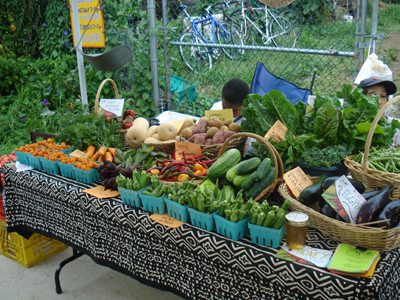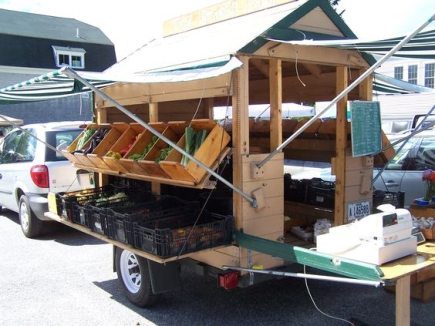This article was written by Ben Greene, owner of The Farmery in Raleigh, North Carolina. It is republished here from Issue 4 of Garden Culture Magazine, where it appeared under the title, “Cultivating with Your City”.
Before you ever break ground, there’s some important urban farming planning you need to do. It may even affect the very location of your farm. Before you get in over your head or discover the endeavor is a failure before sowing your first seed… check out these words of wisdom. The voice of experience from someone who’s already been there, and faced the realities of growing produce and selling it in the city.
Many urban farmsteaders look at the needs of their plants, and access to an eager local population of foodies as priorities when searching for a site in their city. But urban farmers have a great obstacle that rural farmers don’t have to contend with, a devilish nightmare called municipal governments. It’s very important to consider city regulations when planning your farm because codes and development ordinances often will shape the way your farm operates, looks, and what you can produce.
A good place to start when planning your urban farm is to search the internet for press releases that announce changes in the code or development ordinance. In the past 6 years, there has been a huge push by municipalities across the nation to encourage urban farming, and as a result, old planning codes and development ordinances are rapidly changing. Specific changes to look for are notifications of changes in how produce stands are defined, growing chickens, small livestock, beekeeping, and wherein the city farming is allowed.
A major advantage that urban farmers have over rural farmers is easy access to customers, and directly marketing your products to them. However, many cities do not allow you to grow food and sell food on the same lot because cities often categorize selling as a separate industry than agriculture.

Practice good urban farm planning! Can you grow and sell food on the same site? (Courtesy of Archinect)
If you do have restrictions on selling your produce at your farm, you still have options. One is to create a mobile market out of a trailer, converted bus, or the back of a pickup. Mobile markets are often not under the jurisdiction of the planning department. As an added bonus, they do not have to contend with building codes as long as the mobile market is a licensed vehicle. You may also offer home delivery through a subscription on your website. Home delivery is a very popular trend among urban farmers who don’t have the time to stand for hours at a farmers’ market or produce stand.
Farm structures have to contend with an onslaught of code issues. If you’re looking to locate a shipping container or cheap shed on your farm for storage, you may run into issues with the aesthetics of the structure coming under scrutiny from the city administration.
There are two sure-fire ways to get around this. The first is to locate the structure on a part of your property that is not within view of the street. The second one? Borrow some wisdom from the great architect, Frank Lloyd Wright: “The doctor can bury his mistakes, but an architect can only advise his clients to plant vines.” Trellised vine crops around your structure will take it out of the view of the street, and also provide a cover that is agreeable to most development ordinances.

Good urban farm planning reveals options that bypass city hall. (Courtesy of Pinterest)
How about a suburban farm? Locating just outside the city limits can open a lot of options for you. For starters, many government farm programs fall under the USDA Rural Development. Farming inside city limits sometimes disqualifies you from these programs that could provide helpful loans and grants. Many states offer certified roadside stand programs that often provide an exemption from building codes, which could be useful if you don’t want to worry about the energy code, or providing a public restroom.
City permits are often a tangled web of restrictions and requirements. Take care when choosing your site, and look for obstacles in city ordinances that may hinder your growth in the future.
As you can see, the first step in urban farm planning is not organizing your CSA program, or picking out the perfect plot and ordering seed. Research precedes everything, and determines what you can, and cannot do on your farm. A thorough investigation into your options can also point the way to solutions that allow you to make it work despite city hall.
An urban farm seems like a really fun thing to do! Before reading this article I didn’t know that their was a cod or development ordinance! I will need to look into that more. Along with knowing the rules, I need to figure out how to have good growth. Maybe if I get good fertilizer that will help my plant growth success.
I didn’t know that you couldn’t grow and sell food at the same location. It would make sense why you legally couldn’t considering you would have to have a license to sell on any public street or venue. I’ll have to remember that if I ever want to have a little farm in the city.
Hi Sam,
Thanks for stopping by. Glad you found Ben’s article of possible value.
Great article and very well explained. I believe in professionals so this is a very useful article for everyone. Many thanks for your share.
Hi Elfje,
Glad you enjoyed Ben’s article, and you’re right – good thorough planning is important in any business, including urban farming.